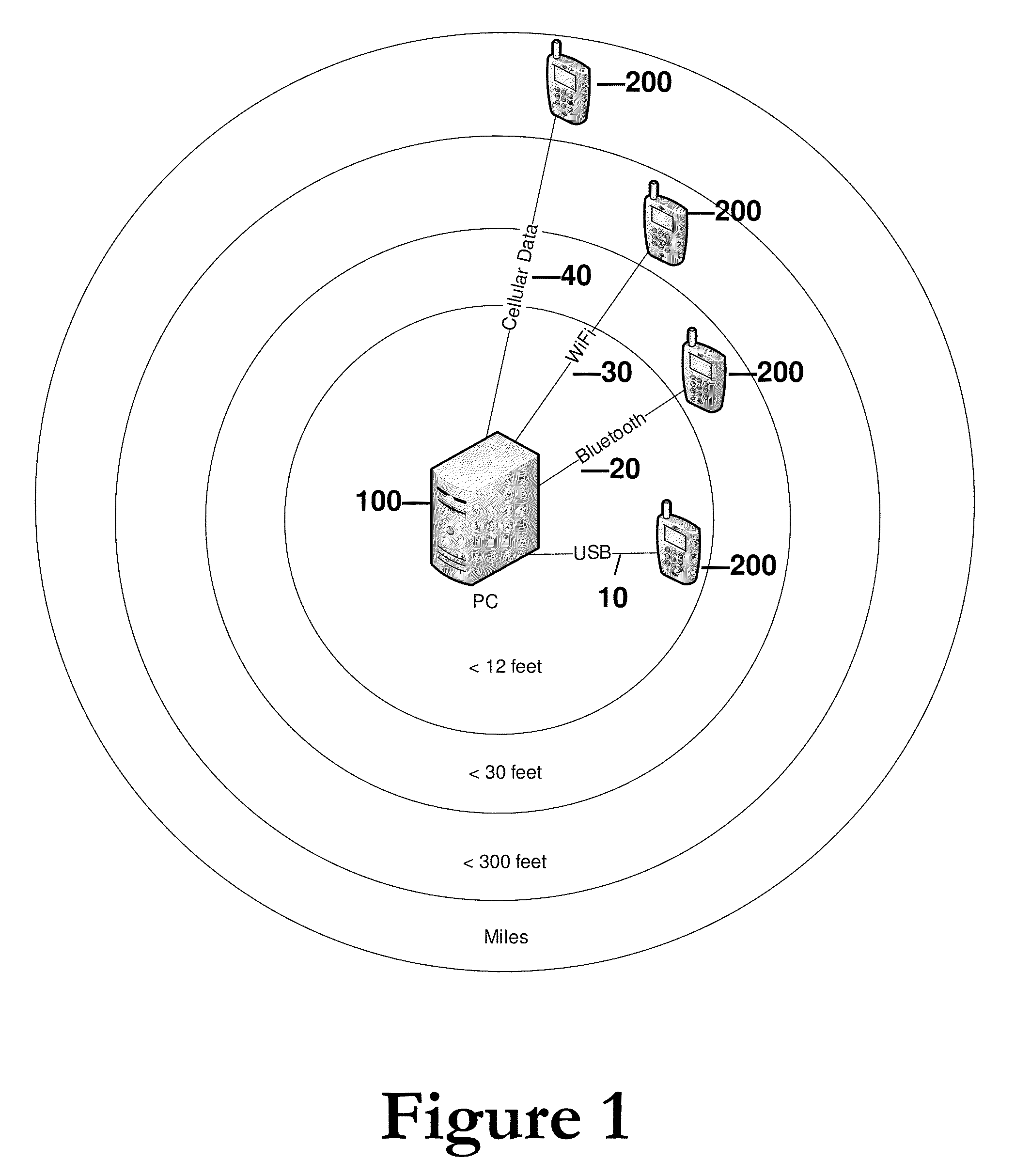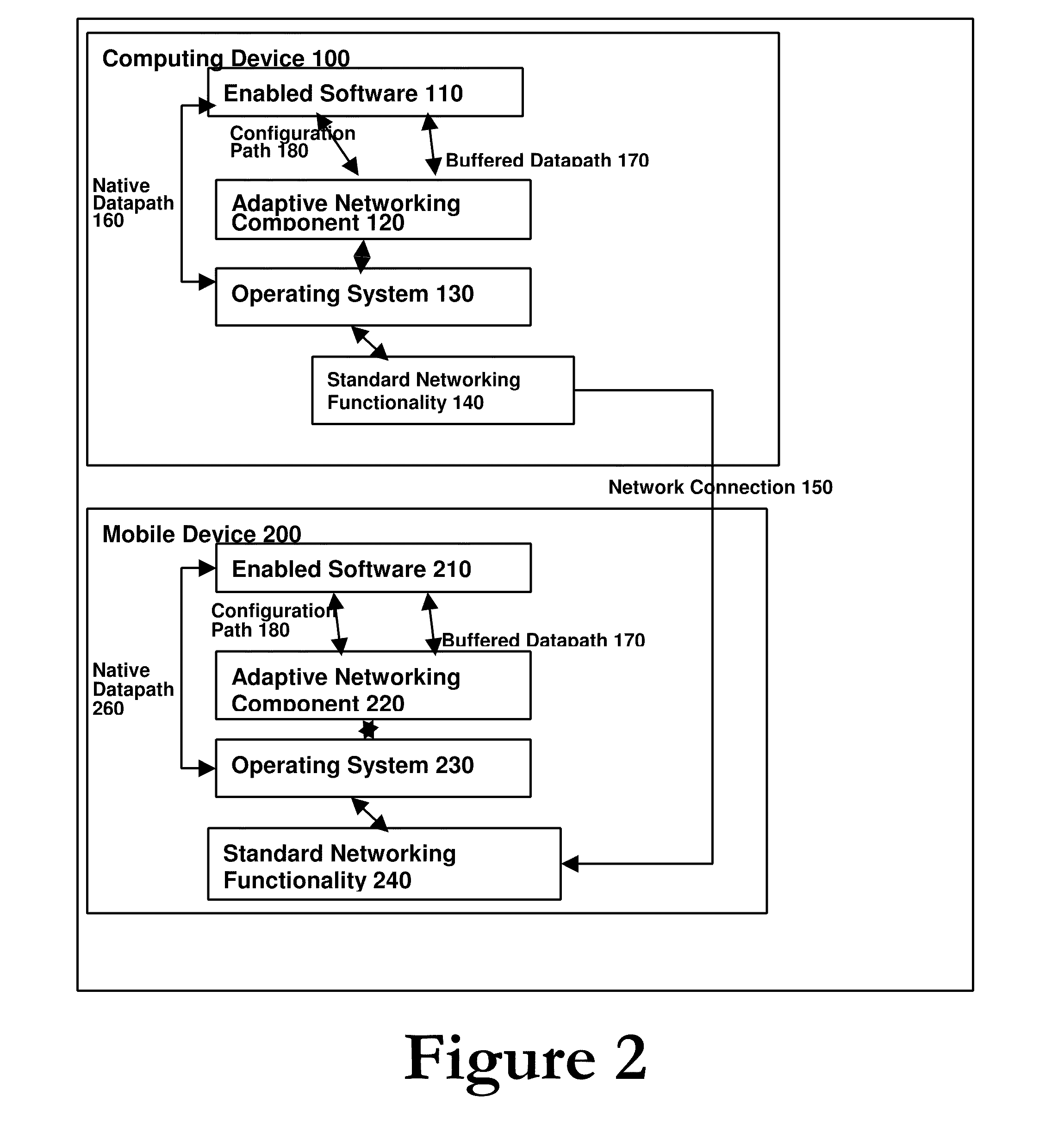Adaptive Networking For Power Savings
a technology of adaptive networking and power saving, applied in the field of mobile devices, can solve problems such as system decline in connection to wifi, and achieve the effects of minimizing power consumption, maximizing battery life, and improving or maintaining network connectivity
- Summary
- Abstract
- Description
- Claims
- Application Information
AI Technical Summary
Benefits of technology
Problems solved by technology
Method used
Image
Examples
Embodiment Construction
[0021]FIG. 1 illustrates the typical distance range of various data communication transport mechanisms. Each of the types of transport mechanisms (of which those listed in FIG. 1 are merely examples) has desirable features, and limitations, some of which are listed here. In FIG. 1, the relative approximate range between a computing device 100 (e.g., Personal Computer (PC)) and a mobile device 200 (e.g, cellular telephone, Blackberry® or the like) is illustrated.
[0022]USB (Universal Serial Bus) 10 provides a very high bandwidth (nominally up to 480 Mbps). Connecting a mobile device 200 using USB port 10 in effect provides negative power consumption, as mobile device 200 may receive power from USB port 10 to charge the battery or the like. USB ports 10 are widely available on computing devices 100. One major disadvantage of USB port 10 is that it has a very short range as it requires physical cable connection between the mobile device 200 and the computing device (PC) 100.
[0023]The Bl...
PUM
 Login to View More
Login to View More Abstract
Description
Claims
Application Information
 Login to View More
Login to View More - R&D
- Intellectual Property
- Life Sciences
- Materials
- Tech Scout
- Unparalleled Data Quality
- Higher Quality Content
- 60% Fewer Hallucinations
Browse by: Latest US Patents, China's latest patents, Technical Efficacy Thesaurus, Application Domain, Technology Topic, Popular Technical Reports.
© 2025 PatSnap. All rights reserved.Legal|Privacy policy|Modern Slavery Act Transparency Statement|Sitemap|About US| Contact US: help@patsnap.com



